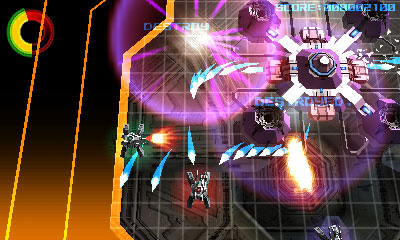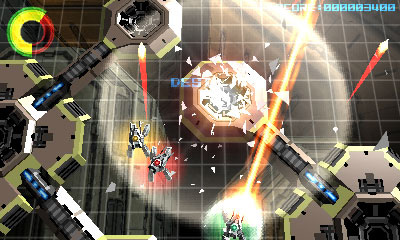Absolutely stunning boss fights
Tends to be tedious
George Whitefield was a preacher during the Great Awakening in Great Britain. Upon hearing him utter the word “Mesopotamia,” people wept. What will happen when people hear him utter the word “Ikaruga”? Ikaruga is a legendary top-down, bullet-hell shoot-‘em-up created by storied developer Treasure in collaboration with famed director Hiroshi Iuchi. Last year, Japanese gamers experienced Iuchi’s latest project, Kokuga and the rest of the world can only wait. Fortunately, the wait is over. Unfortunately, the wait did not meet expectations. Kokuga, developed by acclaimed G. Rev. together with Iuchi, is mostly generic and tedious. The eye-popping, jaw-dropping, and overall brilliant boss fights do little to make up for the dull, monotonous tread beforehand. Kokuga is a valiant effort to explore new and interesting gameplay mechanics, but the masterful game design ultimately fails to overcome the inherently flawed mechanistic choices.
Kokuga features twelve levels (A through L) and three final levels/endings, for a total of fifteen levels. Each level takes ten to fifteen minutes to complete and each level ends with an always epic boss fight, but reaching the boss can be difficult since there are no check points– inspired by arcades of course. The levels are free-scrolling, often with branching paths all taking you to the boss fight. You control a tank with the directional pad and aim your weapons with the trigger buttons.
Unlike bullet-hell shoot-‘em-ups like Ikaruga, Kokuga is slower paced. Without power-ups, your tank’s (and your enemies’ tanks’) rate of fire is extremely slow, almost as slow as one bullet per second. Enemy tanks can often take multiple hits, meaning that enemy tanks often take multiple seconds to destroy. Furthermore, the slow rate of fire comes paired with slow bullets and your tank moves even slower than the bullets. Therefore, unlike bullet-hell shoot-‘em-ups demanding impossibly fast reflexes and impossibly precise movements, Kokuga strives to demand scrupulous and tactical movement.

In some cases, Kokuga’s masterful level design successfully brings out the tactical aspects of the game. One particular stage features indestructible square blocks that pace back and forth to block your shots aimed at vulnerable enemies, all the while firing at your tank. Although every element travels slowly, this particular instance demands timing, movement, and aim more precise than those required for bullet-hell shoot-‘em-ups. In other cases, Kokuga cannot help but feel like a monotonous tread. Some stages contain large open areas populated by immobile tanks that shoot at your tank from about half a screen away. These immobile tanks can take up to three shots to destroy. As a result, you spend about half a minute painstakingly shooting at these immobile tanks from a screen away. I appreciate that Kokuga is trying to create a tactical shoot-‘em-up experience, but at this point, the game begins to drag.
The game lives in slow motion for one reason only: the power-up system. In each stage, you are given twenty power-ups, up to four of which are available to you at a time. These power-ups– including classic weaponries like dual-shots, lasers, and homing shots, and utilities like stealth and force fields– are displayed on the lower screen, and you must tap on them to use them. Afterwards, a random power-up replaces the one you just used. Imagine trying to tap on a power-up in a fast-paced bullet-hell environment. That would be disastrous. This random power-up system might just be the most confusing design choice because this power-up system forces the slow speed of the game while simultaneously undermining the slow, tactical gameplay that it itself forces.

Ironically, the best moments of Kokuga lie in the fast, blazing, yet still tactical boss fights. I believe that if George Whitefield shout casted Kokuga’s boss fights, people would shed tears. Not only are these boss fights gloriously epic, they are brilliant shooter puzzles that demand– all at once– strategy, precision and speed. No matter how unreliable the power-up system may be, you will be glad you have power-ups during these breathtaking boss fights. Challenging, difficult, and brilliant. These boss fights are boss fights done right.
I am never disappointed by effort, but I will always be disappointed by inconsistency and inattention to detail. Kokuga boasts masterful game design that can overcome the haphazard power-up system to create slow, tactical scenarios and fast, strategic boss fights. Why then, are most levels filled with minutes of burdensome crawl? With everything taken into account, Kokuga might just be worth it for the boss fights alone.




 ShareThis
ShareThis






